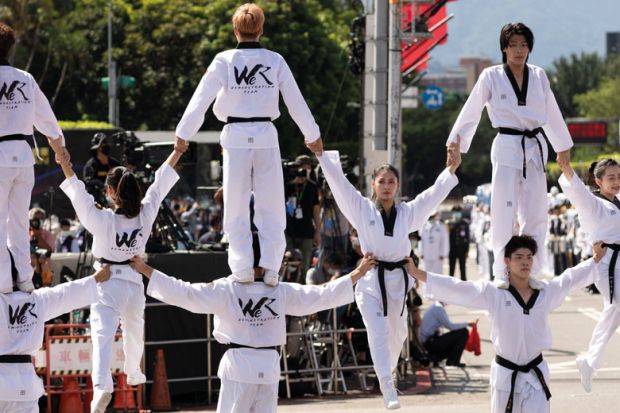In a first, Taiwan’s ministry of education has approved a so-called merger between a public and private institution – a move that scholars say could be a useful model for other universities also on the brink of closure.
In late May, the National Taiwan University of Science and Technology (NTUST), a public institution, got the go-ahead to take over the assets of Hwa Hsia, a private technical university that this year filled only 42 per cent of its capacity – the fifth-lowest rate of any private university in Taiwan, according to local media.
The island struggles with a declining population – also a growing problem in other neighbouring higher education sectors, including in Hong Kong and South Korea, where dozens of universities were recently flagged for closure due to under-enrolment.
The Union of Private School Educators, Taiwan (Uprise) disputed the ministry’s description of the move as a “merger”, saying that existing laws did not permit such manoeuvres. Scholars speaking with Times Higher Education voiced similar views.
Angela Yung Chi Hou, professor and associate dean at the College of Education, National Chengchi University, in Taiwan, said that the process was different in key aspects from a traditional merger.
“[From] my understanding, if two universities merge, they shall have equal rights to discuss future development. The case indeed demonstrates that Hwa Hsia does not have any other choice but to close or dissolve the board of trustees,” she said.
Even so, she said, she believed the move, which she characterised as a takeover allowing NTUST to make use of Hwa Hsia’s infrastructure, was a good way forward – and potentially a solution for other struggling universities so they could avoid millions of pounds of infrastructure going unused.
Chia-Ming Hsueh, a vice-dean and professor at the Minghsin University of Science and Technology, agreed.
“It is not a real ‘merger’ [but] I don’t think it is of significance to discuss too much whether it is a ‘merger’, because it is no doubt a decision made by two universities [for] the protection of the rights and interests of faculty and students,” he said.
According to media reports, current Hwa Hsia students will be able to complete their degrees, although the university is not accepting new applicants.
Sheng-Ju Chan, vice president for student affairs and a professor of education at National Chung Cheng University, called the deal a “friendly articulation plan” for acquiring land and infrastructure. But he doubted it could be widely imitated in Taiwan, given existing constraints.
“A formal framework is needed if more public-private mergers are to be seen,” he said.
Nevertheless, he said he was in favour of similar deals, noting they had the potential to save university buildings – which legally can be repurposed only for educational activities – from gathering dust.
Other sectors facing falling student numbers would do well to look into the option, said Professor Chan.
“Korea can consider how to reserve the best parts of the private universities – with strong academic line-ups, convenient locations or intense linkage with industries and so on – for the public universities,” he said.
Register to continue
Why register?
- Registration is free and only takes a moment
- Once registered, you can read 3 articles a month
- Sign up for our newsletter
Subscribe
Or subscribe for unlimited access to:
- Unlimited access to news, views, insights & reviews
- Digital editions
- Digital access to THE’s university and college rankings analysis
Already registered or a current subscriber? Login








